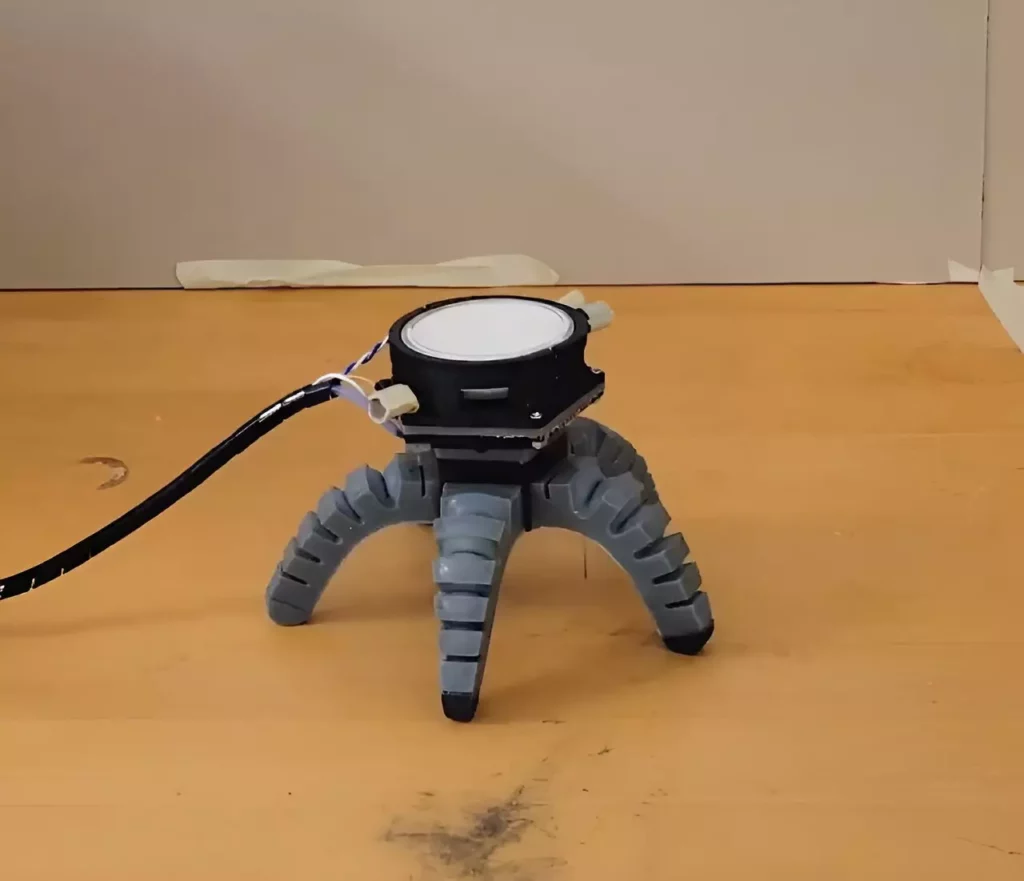In recent years, the field of robotics has been revolutionized by the incorporation of biological elements, particularly through the use of living materials. An exciting step forward has been taken by researchers at Cornell University, who are harnessing the remarkable properties of fungal mycelia to create biohybrid robots. These unique robots, empowered by biological processes, promise to offer enhanced environmental responsiveness compared to traditional synthetic systems. This exploration signifies a new frontier in robotics, where the organic and synthetic worlds converge to provide novel solutions to complex challenges.
Fungal mycelia, the vegetative part of mushrooms, serve as the centerpiece of this innovative research. Their unique characteristics include the ability to thrive in harsh conditions and respond to various environmental stimuli through electrical signals. Unlike conventional sensors used in robotics, which are tailored for specific functions, mycelia exhibit a dynamic capacity to react to an array of inputs, including light, heat, and even biochemical changes. This versatility makes them an exceptional choice for integration into robotic systems.
Anand Mishra, a research associate at Cornell’s Organic Robotics Lab, emphasizes the potential of mycelia as a medium for improving robotic autonomy. By embedding mycelia within robotic electronics, the robots can effectively “sense” their surroundings and react accordingly, offering a leap forward in adaptive technology. For instance, these robots could one day monitor soil quality in agricultural settings, delivering precise interventions based on real-time environmental assessments.
The development of these biohybrid robots is a testament to interdisciplinary collaboration. Mishra worked alongside specialists from various fields, including neurobiology, mycology, and engineering. This partnership highlights the complexity involved in merging biological systems with technology. The electrical signals produced by mycelia are akin to those found in neurons, necessitating a comprehensive understanding of biology for effective integration.
To capture and interpret these signals, Mishra faced challenges, such as ensuring purity in mycelia cultures, as contamination could compromise experimental results. Guidance from mycology experts enabled the creation of clean cultures, while collaboration with neurobiologists facilitated the development of techniques to record mycelial electrical activity. This holistic approach underscores the importance of cross-disciplinary dialogue in advancing scientific frontiers.
The researchers built two prototypes: a soft robot with a spider-like form and a wheeled robot. These biohybrid robots underwent a series of experiments designed to assess their responsiveness to mycelial signals. In an initial test, the robots demonstrated mobility influenced by the inherent electrical activity of the mycelium. Subsequent stimulation with ultraviolet light prompted changes in their gaits, showcasing the mycelia’s ability to respond to specific environmental cues.
The experiments not only validated the concept of mycelia-based control systems but also opened avenues for future applications. The robots’ capacity to be overridden by external signals illustrates the potential for sophisticated interactions with their environment, particularly in unpredictable scenarios.
The implications of this research extend far beyond robotics alone. The fusion of living and synthetic systems offers profound insights into how organisms interact with their environments. This interaction could pave the way for enhanced monitoring systems capable of providing real-time data on ecological health. Such technologies may revolutionize how we manage agricultural practices, potentially reducing the detrimental impacts of over-fertilization and contributing to sustainable food production.
Moreover, the ability to visualize mycelial electrical signals through robotic movements establishes a new paradigm for understanding biological responses. This creates exciting possibilities not only for technological advancements but also for a deeper comprehension of life systems and their responses to stressors.
The marriage of fungi and robotics heralds a transformative era in technology where biohybrid robots could redefine our interaction with the environment. By leveraging the innate characteristics of fungal mycelia, researchers at Cornell are not only challenging the boundaries of robotics but also initiating a broader discourse on sustainability and ecological intelligence. As we continue to explore these innovative frontiers, the potential to create more adaptive, responsive, and environmentally integrated technologies becomes increasingly apparent.









Leave a Reply